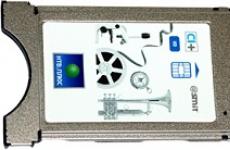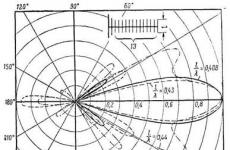Do not drain water in the Bosch dishwasher. Dishwasher clogged: what to do?
Nowadays, a dishwasher plays a very important role in every kitchen. The presence of such an assistant significantly saves time and simplifies homework. However, unfortunately, these devices sometimes fail. Even the usual blockage can bring a lot of problems to the owners of these devices. Consider how and why it occurs, as well as what methods you can effectively solve this problem. Timely competent repair will ensure a long service life of the dishwasher.
Types of blockages
Quite often there is such a situation, when the usual process is going on when loading dishes into the device, however, due to the accumulation of soapy water, it cannot be completed. Anyway, clogging in the dishwasher bosch car brings certain difficulties. In order to eliminate it correctly, it is necessary to determine whether it is internal or external.
Elimination of external blockages
External blockages include such problems as:
- kink hose;
- sewer system blockage in the apartment.
Such problems are usually solved in the simplest ways. To do this, you must perform a series of sequential actions:
- disconnect the dishwasher from the mains;
- disconnect the device from the home sewer system;
- thoroughly clean the sewer pipes using special chemicals or ordinary wire.
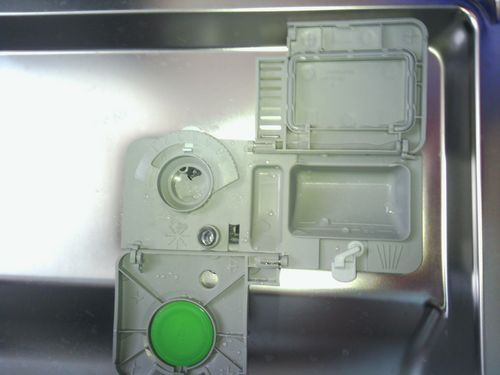
If the problem lies in the excess of the drain hose caused by improper installation, you must carefully straighten it and then reconnect it to the household appliance.
The main types of internal blockages
Internal blockages are more frequent and diverse. The most common of these are blockages:
- internal filter;
- drain pump;
- blades of the device;
- drainage system;
- filter water supply valve.
To reliably protect the internal filter from undesirable clogging, it is necessary to regularly eliminate all leftover food. The reason for the clogging of the filter valve for water supply are the tiny particles of rust that stick into it. The drainage system can also become clogged due to leftover food or paper napkins. The same residues in combination with hard tap water are a serious threat to the normal performance of the blades of the dishwasher. To properly and effectively eliminate clogging, you must determine its type and cause.
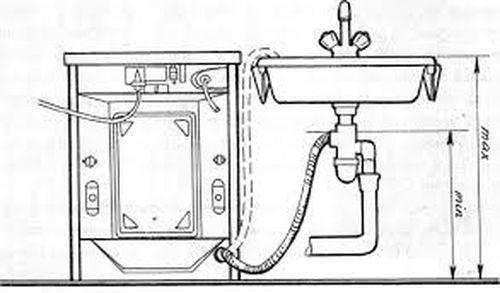
How to correctly remove the clog?
If the blockage in your Bosch dishwasher is not very serious, you can fix it yourself - photos and videos will help you. But in more difficult situations it will not be possible to avoid professional repair.
So, you need to quickly and effectively eliminate clogging in a Bosch dishwasher. Before embarking on this lesson, you should very carefully read the instructions attached to this household appliance - this will help you easily understand the exact locations of all filters and other important elements.
To clean the clogged parts, you can use tools such as pliers, screwdrivers and tweezers. In addition, in this case, it is imperative to prepare any container suitable for draining residual liquids.
There are frequent situations in which a sudden stop of the dishwasher occurs directly during the washing process, and the water remains inside the unit. In this case, to eliminate the blockage, you must:
- disconnect the device from the mains;
- disconnect the drain hose and place it in a container for draining water;
- turn on the dishwasher;
- set drain mode.
If the water drains problematically - it means that the drain hose is clogged. You can eliminate the blockage this way:
- disconnect the second end of the hose;
- clean thoroughly by passing a powerful stream of water through it.
Prevention of blockages
It is important not only to properly clean the clog in the dishwasher, but also to comply with preventive measures. This will help to avoid unnecessary problems and unexpected costs.
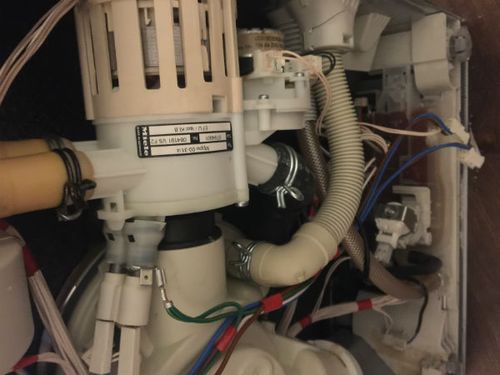
Wash the internal filter under running water. Blade blockage can be eliminated with a thin metal wire. In addition, do not accumulate dirty dishes in too large volumes.
What to do if at the end of the program the dirty water did not merge, but remained in the dishwasher? It is necessary to try to establish the cause of this malfunction, which may be the result of the following factors.
Common causes of failure
- Blockage Clogged drain hose filter rough cleaning or separate sites of drain system. Small debris filled the cleaning membranes and blocked the passage of water.
- Kink Hall of flexible hose, due to which dirty water remains inside the machine and does not drain into the sewer.
- Pump breakdown Blockage or failure of the pump, which pumps out the dirty water and is responsible for its descent into the drain hose. The pumping system does not work, and dirty water remains inside.
- Malfunction of the software module. Failure of the software responsible for performing the full cycle of the household appliance. Required programs are executed with errors or blocked.
- Breakage pressostasa. Malfunctioning sensor that measures the pressure of water in a dishwasher. Pressostat sends a signal to the software module about the end of the working cycle. If there is no signal, the draining process does not start.
It is possible to determine and eliminate the cause of incorrect operation in some cases by independently conducting a preliminary inspection of the dishwasher and checking the drain system.
What you can check yourself before calling a specialist
Important! All specified works should be performed only when the dishwasher is completely disconnected from the electrical network.

If none of the above procedures gave results, and the dishwasher still does not drain the dirty water, you need to call a specialist who will quickly determine the cause of the breakdown and eliminate it within a minimum time. Independent inspection and disassembly of the software panel and internal mechanisms can lead to the complete failure of expensive parts and will entail large material costs for their restoration.
Risk factors causing damage
In most cases, the main cause of malfunctions are clogged drain system. Leftover food, bones, pieces of foil, small fragments from dishes and other foreign objects falling into the inner compartment block the descent of dirty water, and it remains inside the wash container. Failure to perform basic operational functions can also cause software failure, overheating of pumping equipment and its complete failure.
The second main factor in the breakdown can be called non-compliance with recommendations from the manufacturer and not competent operation of household appliances. If you do not follow the instructions, overload the machine with dishes, do not use specially designed means for washing and softening water, ignoring system warnings of improper operation and ignoring mandatory preventive maintenance, the warranty period of your kitchen unit may be reduced by several times.
Prevention, a pledge of many years of work
Compliance with the rules of operation and preventive procedures, significantly extend the life of expensive equipment and reduce the material costs of service repairs.
- Installation Installation of the dishwasher must be carried out in full compliance with the instructions. Free arrangement of hoses, proper connection and adjustment of the software will be the basis for stable operation and proper functionality.
- Cleansing Once a week - cleaning and washing the coarse filter. Once a month - start the car on an intensive program without loading dishes with the use of detergent. Once every six months - cleaning the seal on the door with a special cleaning agent. Regular disposal of internal mechanisms of fat and scale prolongs working life and ensures the correct operation of a complex system.
- Dishes. Careful removal of food debris from dirty plates and careful handling of dishes should become a habit for any hostess. This will be the guarantor of the absence of frequent blockages and eliminate unexpected mechanism breakdowns.
- Detergents. Use for washing dishes and cleaning equipment only special products for dishwashers. Special components included in their composition improve the quality of tap water, reduce the formation of scale and provide anti-corrosion effect.
Not complex tips will help to maximize the performance and significantly increase the operational life of the dishwasher. And appeal to our service center in the event of an unexpected breakdown, it will help to establish the exact cause of any malfunction and will quickly return your irreplaceable kitchen assistant to work.
Any hostess will agree that dishwashers and washing machines greatly facilitate our lives. But what to do if one of them is clogged, and the water does not go down the drain? The most important thing - do not panic, but try to pinpoint the cause that led to the problem.
The main features of the functioning
Dishwashers, as well as washing machines, have an inlet valve for pumping clean water from the plumbing. However, in the first case, its design is slightly simpler: it is single.
After filling the water tank, the incoming liquid is heated or immediately, thanks to an electric pump, is supplied to the rocker arms for washing dishes. Jets for washing tableware dishwasher directed at different angles, which provides high quality washing. Household washing devices such a function, of course, to anything.
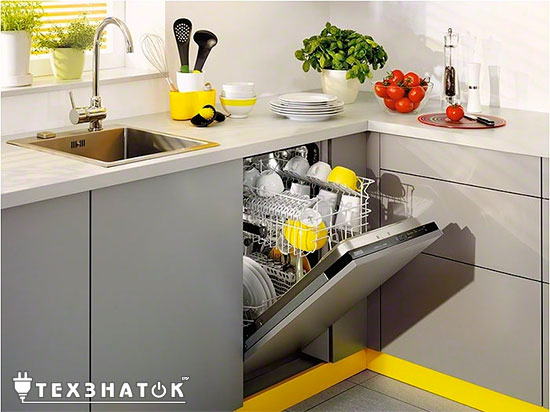 For many housewives, a dishwasher has become an effective remedy for the daily routine.
For many housewives, a dishwasher has become an effective remedy for the daily routine. Then the water enters the lower part of the compartment, is filtered using two different types of filters, and then, prepared for the next technological cycle, is collected in a special container. The liquid, which the dishwasher system recognized as unsuitable for further use, is drained to the sewage system due to the operation of the drainage pump.
And of course, we must understand that nothing like washing appliances is required. There, all waste water is considered dirty and is not subject to filtration.
The entire working cycle is monitored by a special device - the pressure switch. TEN when necessary, heats the water to the desired temperature, and the solenoid valve throws detergent into it. At this stage, all processes in the dishwasher and washing machinesah absolutely identical.
Malfunctions that do it yourself
If you are lucky, and the failure is not serious, then, having spent a little time and effort, you will repair the household appliance without even leaving your home. First of all, this refers to blockages of various degrees of complexity and excesses (or twisting) of the drain hose. And remember that before starting repair work it is necessary to remove the plug of the dishwasher from the outlet.
Situations where you can try to repair yourself:
- drain hose bent over;
- water purification filters are clogged;
- drain system clogged with food residues;
- clogged drain pump.
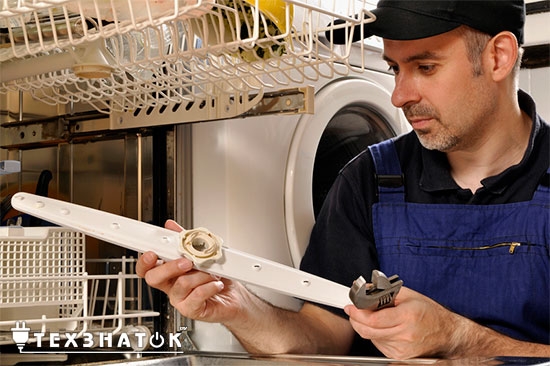 Problems with a hose or blockages can be resolved on your own, but in more serious cases you cannot do without professional help.
Problems with a hose or blockages can be resolved on your own, but in more serious cases you cannot do without professional help. Drain hose bent over
To eliminate the problem, you only need to gently straighten the nozzle so that the free flow into the sewage system of the waste liquid is adjusted.
Water purification filters are clogged
This situation happens if you ignore the instructions of manufacturers of household appliances on the removal of food debris before placing in the washing device cutlery. As a result, you only need to clean the filter, which is most often located at the bottom of the home electronic device.
Drain system clogged with food residues
To eliminate the malfunction, drain the water, disconnect the hose from the sewage drain, lower it into a small container and start the drainage mode. With a normal jet, you need to check the place where the hose and sewage dock, and if it is weak or absent, make sure that the drain connection is in good condition.
Clogged drain pump
With enough skill and convenient location of details in your model of the dishwasher, you can try to eliminate the problem, very carefully, with a thin stick or pencil.
Malfunctions that fix it yourself will not work
You need to understand that some faults dishwashers and washing machines to fix their own hands at home is impossible. If you have already checked everything described above, you may need to call the appliance repair technician.
Breakdown of the drain pump
In this case, only the replacement of the part will help, and the drainage pump must be replaced by an experienced specialist. Doing it yourself is extremely dangerous.
Problems with water level sensor (pressure switch)
Without actual data on the required fluid pressure, the software module cannot work correctly. A pressure switch needs to be replaced, and it is better to entrust such an operation to an experienced master from a specialized company.
Software module malfunction
It is clear that in fact we are talking about the "brains" of a household appliance, without which you should not expect any normal work. Perhaps the usual flashing will help, but sometimes nothing will be left except to replace the broken part with a new one.
Remember that with any independent action you risk losing the warranty from the manufacturer of your washing or washing device. The advice here is one: start repairing your own hands only if you are sure of its successful completion.
No matter how high-quality the kitchen appliances, it may sooner or later fail in operation. This also applies to dishwashers, which at some point simply do not drain the water. Such a nuisance can occur even with the products of such well-known manufacturers as Bosch, Zanussi or Indesit. What is the reason for such a breakdown and what to do in such a situation?
Water does not drain: what can it be connected with?
There may be several reasons why water is in the dishwasher. In the first case, we can talk about the occurrence of blockage or bending of the drain hose. You can fix it yourself. But other reasons may have a more complex nature, which is associated with the malfunction of individual elements and systems dishwasher. In this case, without the help of professional craftsmen simply can not do, since attempts at self-repair can lead to more serious problems.
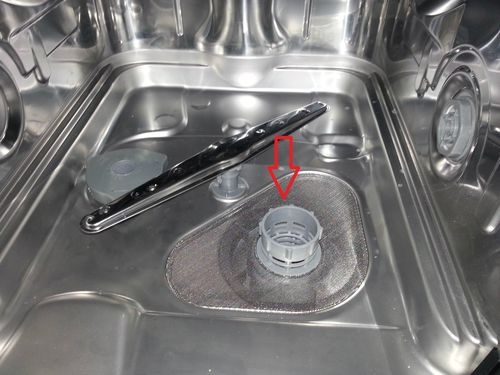
Attention! Before direct self-diagnosis of a dishwasher, disconnect it from the power supply!
Drainage in the machine may not be completely completed for the following reasons:
- The device bent over the drain hose. When the hose connecting the sewage to the dishwasher is pinched or bent, then the water has nowhere to go from the equipment. In such a situation, you need to fix the hose, and then turn on the unit and try to restart it.
- Clogged filter. Practically every dishwasher manufacturer strongly recommends rinsing all cutlery from food particles before placing it directly into the device. However, not everyone fulfills this rule, thus causing the filter to clog the filter with food particles and other debris. Such a part is located at the very bottom of the device - it should be carefully removed and cleaned of the resulting blockage. After performing such a simple procedure, the dishwasher will be able to cope with its main tasks again.
- The drain system is clogged. All the same food debris can lead to the formation of a plug in the drain hose, as well as in the places of its passage into the sewer. You can clean these elements by your own efforts. First of all, the drain hose is very carefully disconnected from the sewer system and immersed in a container prepared in advance. Next you need to activate the drain option. In the case when water flows out of the hose with a big pressure, the problem lies in the connection of the sewer and the hose. If the dishwasher does not drain the water to the end, then you cannot do without cleaning the hose.
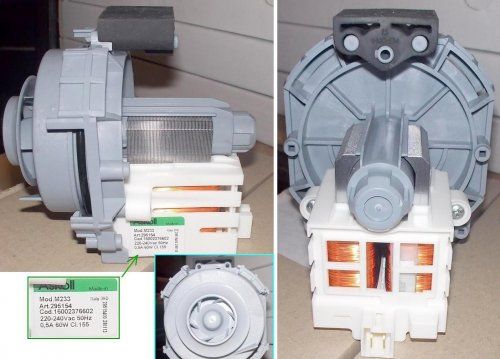
- Clogged drain pump. It is because of this reason that a dishwasher does not drain the water more often. If the design features of the equipment make it possible to independently access the pump, then it can be cleaned by your own efforts. For these purposes, it will need to be dismantled, thoroughly cleaned and then checked for ease of rotation of the inner impeller. Perform such a manipulation should be through a pencil or other elongated object. This is due to the fact that most blockages consist of fragments of dishes that can seriously hurt.
If, after cleaning all filters and hoses, the dishwasher does not drain any more, or does not turn on at all, then a more serious breakdown may be the cause of the malfunction.
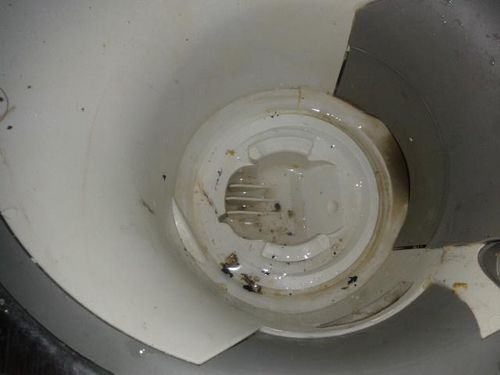
For what other reasons can water not flow?
There are other reasons why a dishwasher does not drain. However, they are serious enough, and only a professional master can fix them. These include the following:
- Broken drain pump. In this case, there can be only one failure - the replacement of a failed element with a new one.
- The pressure switch failed (water level sensor). If such an element of the dishwasher breaks, then the program module will not be able to obtain information from the internal water pressure. In such a situation, it will also be necessary to replace the defective part, otherwise the equipment will not work properly, increasing the likelihood of a flood.
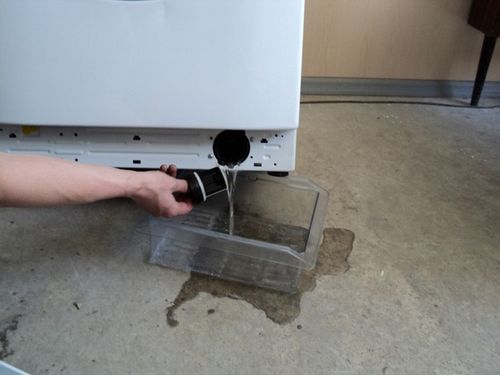
- Breakage of the program module. It is this element of the dishwasher that is responsible for analyzing the washing cycles and sending the corresponding signals to all the other equipment nodes. If such a system fails, then the whole operation of the device leads to various unpleasant situations. If the unit does not drain the water to the end, then it may well be that we are talking about the failure of the entire software module.
Each of the listed reasons for incomplete discharge of water requires its own specific decision, which will help the video to learn in more detail.
It seemed that nothing foreshadowed troubles: you loaded the dirty dishes into the equipment, the washing started in the normal mode, but did not have time to finish! Water (perhaps even soap) is inside the dishwasher and does not drain. Instead of the usual murmur, only silence is heard or strange sounds are heard - rumbling, buzzing or a slight clicking. Common situation? We'll figure out!
There are two types of reasons for which the drain in the dishwasher does not work. The first of them is the excesses of the drain hose and blockages, which are easy to handle on your own. The second reason is more serious and is associated with the occurrence of faults in the various elements of the dishwasher. Here we cannot do without the help of professionals, but first we will try to deal with the problem “on the spot”.
IMPORTANT!Before you start diagnosing, do not forget to disconnect the dishwasher from the network!
- Dishwasher drain hose kink. If the hose connecting the equipment to the sewage system is bent or pinched, the water has nowhere to physically go. Carefully flatten it, connect the machine to the network and try to run the drain again.
- Dishwasher filter clogs. All manufacturers recommend rinsing dirty dishes from food residue before loading it into the equipment. But many owners of "dishwashers" neglect this rule, and therefore the filter of the machine is clogged with food particles, pieces of napkins and other debris. The filter is located at the bottom of the dishwasher - carefully clean it from clogging, and your “assistant” will be ready to work again.
- Clogged dishwasher drain system. Remains of food, wads of napkins, forgotten on the plates of toothpicks and other debris can pass through the filters and form blockages in the drain hose or in the place of its connection with the sewage system. You can clean them yourself. First, prepare a container for draining the water, then carefully disconnect the drain hose from the sewer, lower it into the container and turn on the drain mode. If water flows from the hose with a powerful jet, then a blockage has occurred at the junction of the drain hose with the sewage system. If the water from the hose still does not drain - then perhaps a blockage has formed in it itself. Then you need to disconnect the second end of the hose, and rinse it yourself under a powerful stream of water.
- Dishwasher drain pump blockage It is also a common reason why a dishwasher does not drain. If the design of the machine allows you to get to the pump, you can clean it yourself. To do this, carefully remove the pump (unscrewing all fasteners), remove the blockage, and then check how easily the internal impeller rotates. This should be done with a stick or a pencil - with any object, but not with your hands, since fragments of broken dishes are often caused by blockage of the drain pump. Cleaning the pump requires skill, so if you are not confident in your abilities - it is better to entrust this work to specialists.
So, you have cleaned all the filter hoses - you can connect the dishwasher to the network and restart it. Still does not drain? Well, it looks like a serious malfunction has arisen in your vehicle. Try to determine the type of damage using our table.
3 main reasons why the dishwasher does not work
| Malfunction | Signs and solutions | Prices * ** |
|
Out of stock drain pump |
The drain pump is responsible for draining the water from the dishwasher, and if it “burned out”, the water will not drain. Pump replacement required |
From 1,800 rubles. |
|
Malfunctioning water level sensor(pressostat) |
One of the important elements of any dishwasher is the pressure switch - a special sensor that measures the pressure of water inside the dishwasher and sends a signal to the program module. Water level data is required for each wash cycle, and if they do not arrive, the machine starts to work incorrectly. The pressure switch needs to be replaced. |
From 1 600 rub. |
| Failed software module |
The software module is the “brain” of the dishwasher - it analyzes the washing cycles and sends commands to other nodes, for example, “drain the water” to the drain pump, “heat the water” to the heating elements, “draw water” to the inlet valve. If the control module is faulty, these commands may be sent incorrectly or not sent at all. A “flashing” of the program module or its complete replacement is required. |
From 2 500 rub. |
* The table shows the approximate prices, a full calculation of the cost of repair work will provide you with the master after the diagnosis of the dishwasher.
** Prices do not include the cost of consumables and spare parts.
If among the reasons described you have seen all the signs of your failure, it’s time to turn to professionals! Dishwasher repair is quite time-consuming and technological process, and therefore it is not recommended to carry it out yourself. Incompetent approach in this matter is able to further aggravate the situation, to the extent that your “assistant” will have to be sent for scrap.
Invite qualified masters of RemBitTech:
7 (495) 215 – 14 – 41
7 (903) 722 – 17 – 03
They will hold free diagnosis of your dishwasherand accurately determine the cause of the fault. Our specialists have an impressive experience in repairing “dishwashers”, regularly attend advanced training courses from leading manufacturers and will be able to quickly repair any damage. You just have to wait 1-2 hours from the moment of the master's arrival, and you can forget about dirty dishes again!
- Read more:


